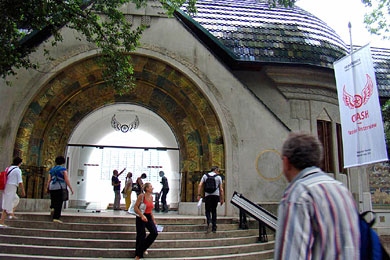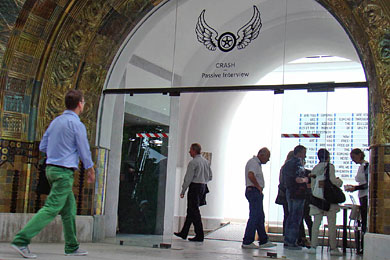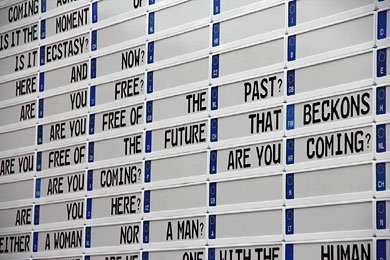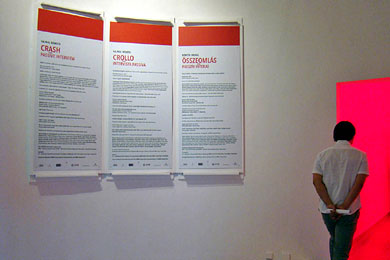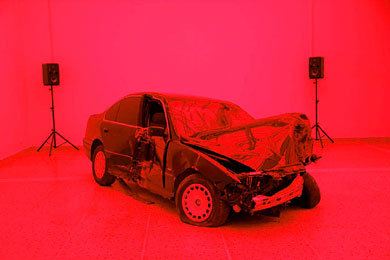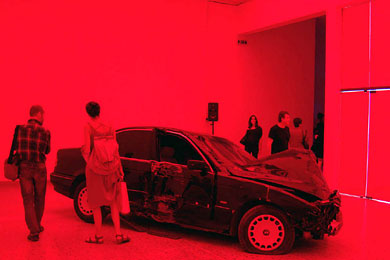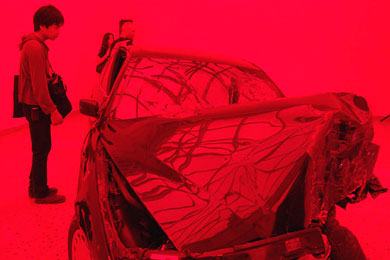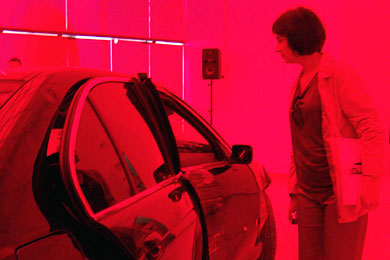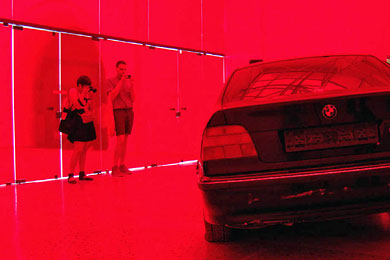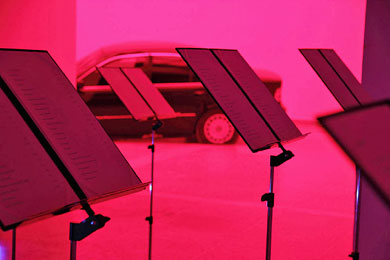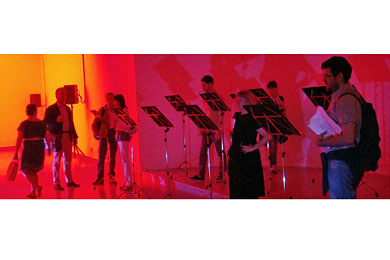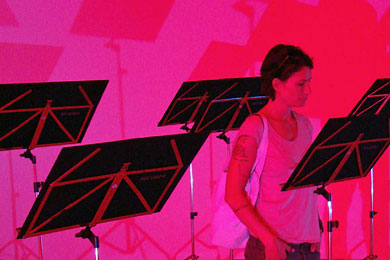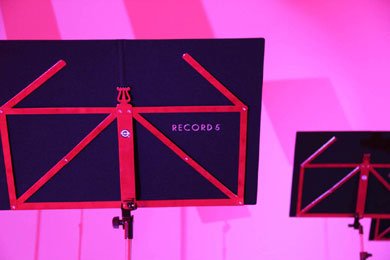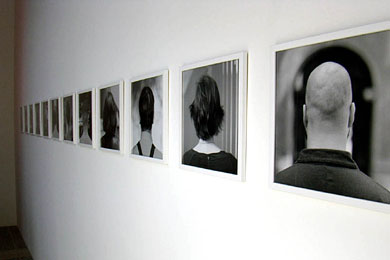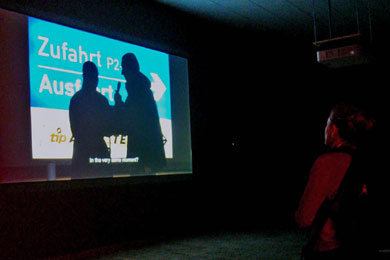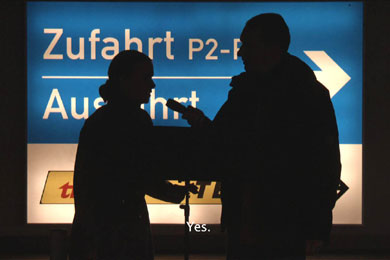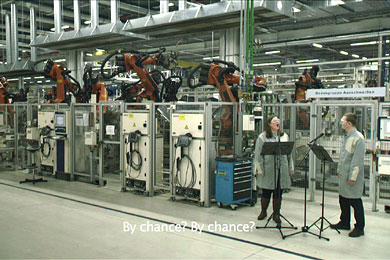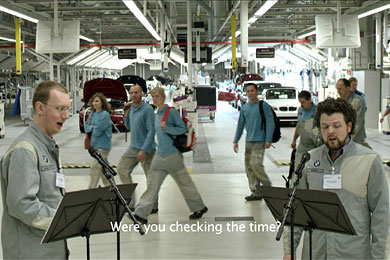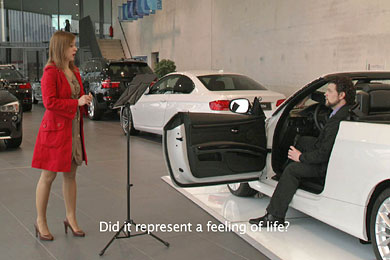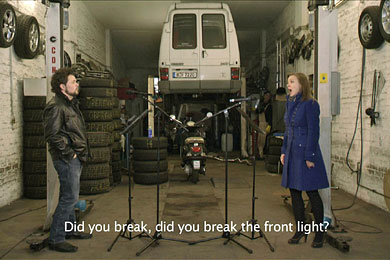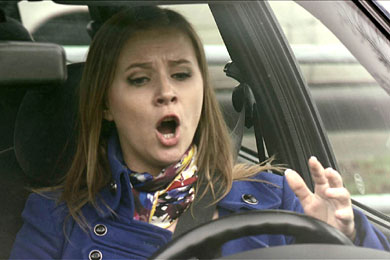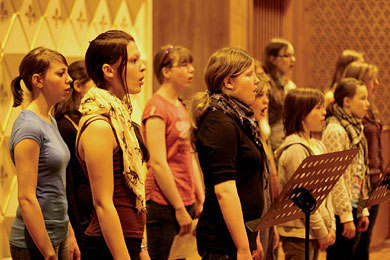INSTALLATION
images
...The sight of a totaled car is shocking indeed, as the energy of the crash is imprinted in its shape, in its creases and distortions. Most of us are probably interested in the underlying story: how did the accident happen? Did they survive?
Related by a survivor, the catastrophic moment is slowed down by memory to an extreme version of the most minuscule detail, going back even to the very beginning of the fateful day, as if he were exploring the relation of cause and effect, and his decisions that eventually and irrevocably led to the crash.
In this slow replay I examine the resettling after the shock, the “comforting” explanation for the unavoidable crash. But the fact that the outcome of this story is predetermined – as indicated by the yes-no questions of the sung inner monologues – is far from comforting. The opera genre is intended to convey this tension. "
The story begins at a car factory, and thus the story of the car, its “life” which is ended by the crash, ironically takes the place of human life at some points...
